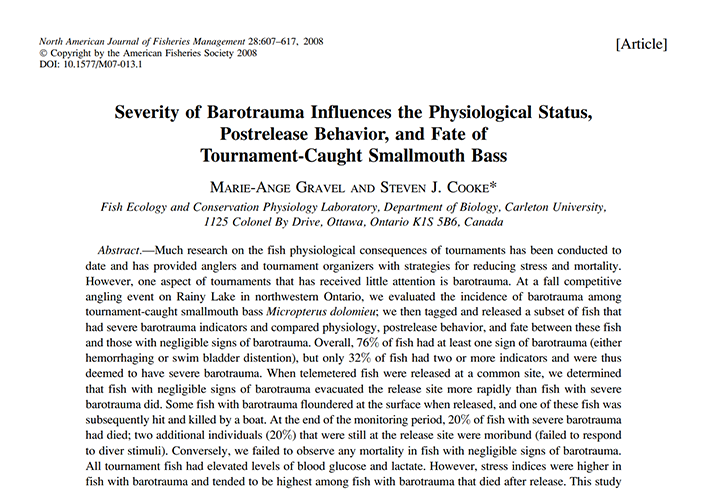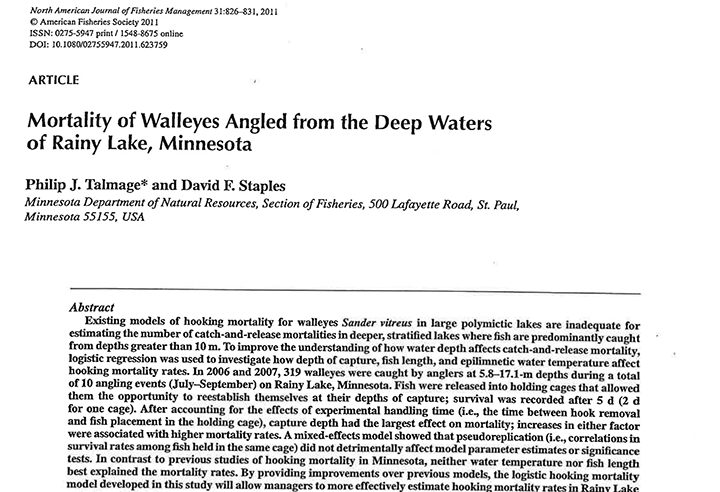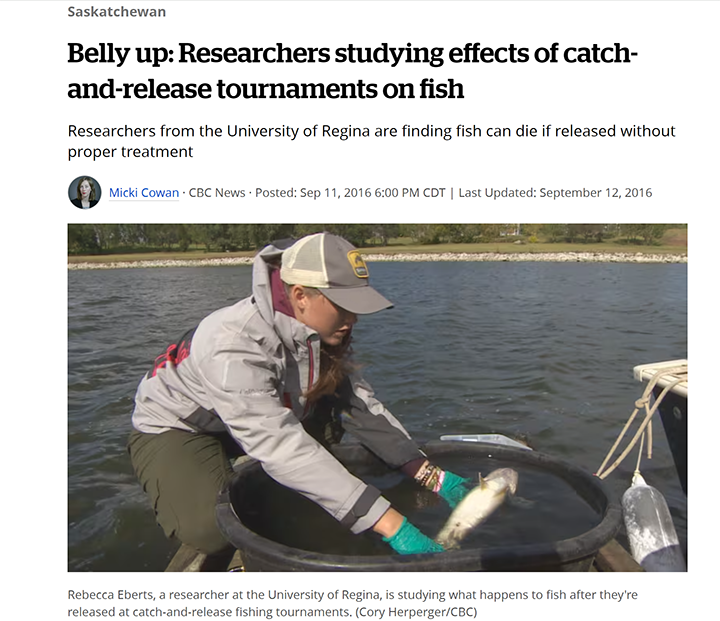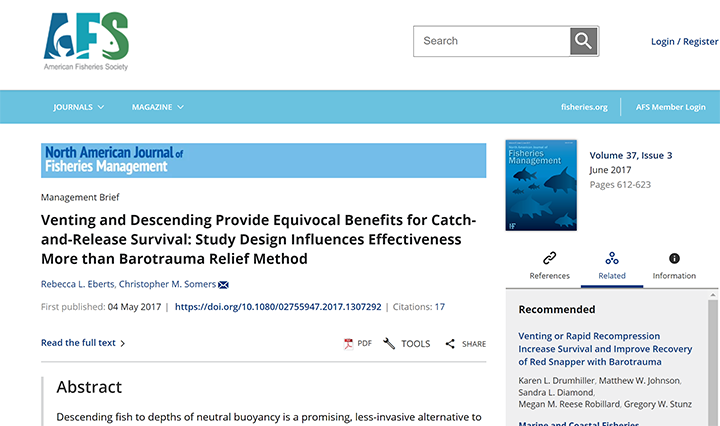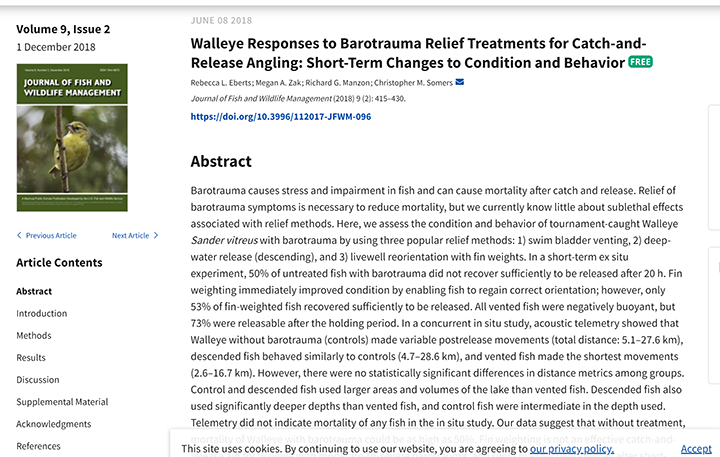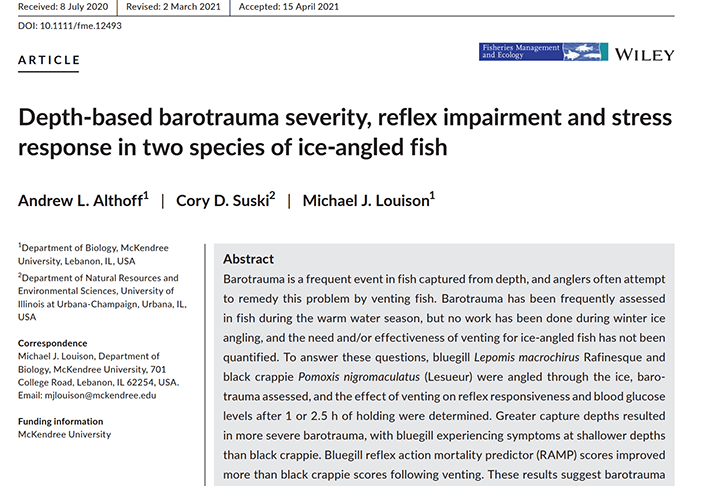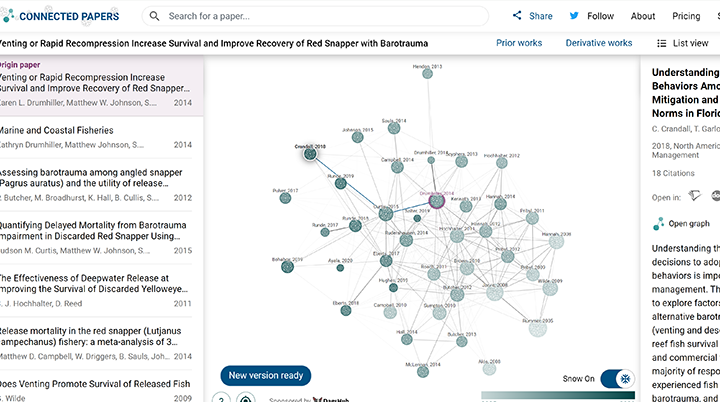
 Jeff Sundin January 7, 2024 "Baraotrauma - We Already Know More Than You Think" Fishrapper Fishing Articles Section: Barotrauma Research, Studies and Reports
Jeff Sundin January 7, 2024 "Baraotrauma - We Already Know More Than You Think" Fishrapper Fishing Articles Section: Barotrauma Research, Studies and Reports

I was on the phone Saturday (1-6-2024) morning with Uncut Angling’s Aaron Wiebe talking about his recent video presentation about barotrauma affected crappies. I was then, and am now, most grateful for his willingness to engage with me in the lost art of civil discourse. Our conversation was fairly long, so I won’t bore you with every little detail. Instead, I’ll just cut to the chance and start by saying that I agree with 90 percent of his presentation. Where we differ, opinions about whether fish caught in 35 feet of water can be “safely” released, will likely lead to more conversations down the road.
You’re probably worried now that I’m headed down the path toward debating the “science” of barotrauma again, but I’m not! We’ve debated enough about that already. I wonder though, after following the commentary, have you noticed a certain behavioral phenomenon like I have? Have you noticed that folks have a tendency to pick and choose selected details from a story, and then use those, and only those select details in order to advance their own, personal opinions?
Wiebe and I talked about that, and I shared with him, my concern about one of those select details. It was his suggestion that because deep water caught crappies swam away when released meant that the releases were "successful". Admittedly, Wiebe did make that claim, but it was not the only point of his presentation. During the video I heard Wiebe’s repeated cautioning about fishing in deep water, and his advisory about the potential for delayed mortality, and his several calls for a reliance on self-regulation to prevent unnecessary mortality.
Despite all those warnings and disclaimers, many of Wiebe's followers, at least the ones who responded publicly, clung to the one part of the video that they “wanted” to hear. What many of them heard, and fervently believe, is that releasing fish caught in deep water, even over 30 feet, is perfectly fine. They believe it's okay to catch as many as you want, release them and then as they swim away, wish them a long and happy life.
Personally, I say hold on, it's not that simple and while there is some grey area, there is also plenty of evidence to suggest that releasing deep-caught fish is a really bad idea. Whether it is really is okay to release those deep-caught fish or not will continue to be debated. But for the sake of discussion let’s say that it is. Then let's take the next most widely expressed comments expressed by lots of thoughtful viewers. Many of them suggest the need for more study, even anglers who I consider to be “in the know", don't realize how much study has already been conducted. I’m all for more study, but today, I want to serve my my fellow anglers by providing access to some of that valuable information.
How much do we know about barotrauma? The true answer is that we know a lot!
I’ve compiled a single page that links numerous barotrauma related studies. I could have included more, but I limited inclusion to studies regarding walleye, crappies and bass, the fish that our audience pursues most often. If you’re interested in a deeper dive, pun intended, then click on the last image. That link leads to an interactive map that allows you to read more studies from all over the country. And as always, if you know more and want to share, I'm easy to reach and willing to learn! ![]() — Jeff Sundin 218-245-9858 or EMAIL
— Jeff Sundin 218-245-9858 or EMAIL
January 2011 - Mortality of Walleyes Angled from the Deep Waters of Rainy Lake, Minnesota
Belly UP: Researchers Studying Effects of Catch and Release Tournaments on Fish
Venting and Descending Devices Provide Equivocal Benefits for Catch and Release Survival Stidy Design Influences Effectiveness More Than Barotrauma Relief Method
Walleye Responses to Barotrauma Relief Treatments for Catch-and-Release Angling: Short-Term Changes to Condition and Behavior
Depth Based Barotrauma Severity, Reflex Impairment and Stress Response In Two Species of Ice-Angled Fish
Interactive Map Links to Studies Connected With Barotrauma In Fish
Releasing fish caught in deep water can be hazardous to their health. Barotrauma and its impact on freshwater fish is not widely understood but must be considered by any angler who pursues fish that inhabit deep water. Freshwater fish like crappie, walleye, northern, pike, bass, sunfish, and perch are all susceptible to damage caused by reeling them up from deep water. This page offers anglers links to research papers, studies and videos that will help understand the impacts of barotrauma on your favorite fish, in your favorite lakes.
